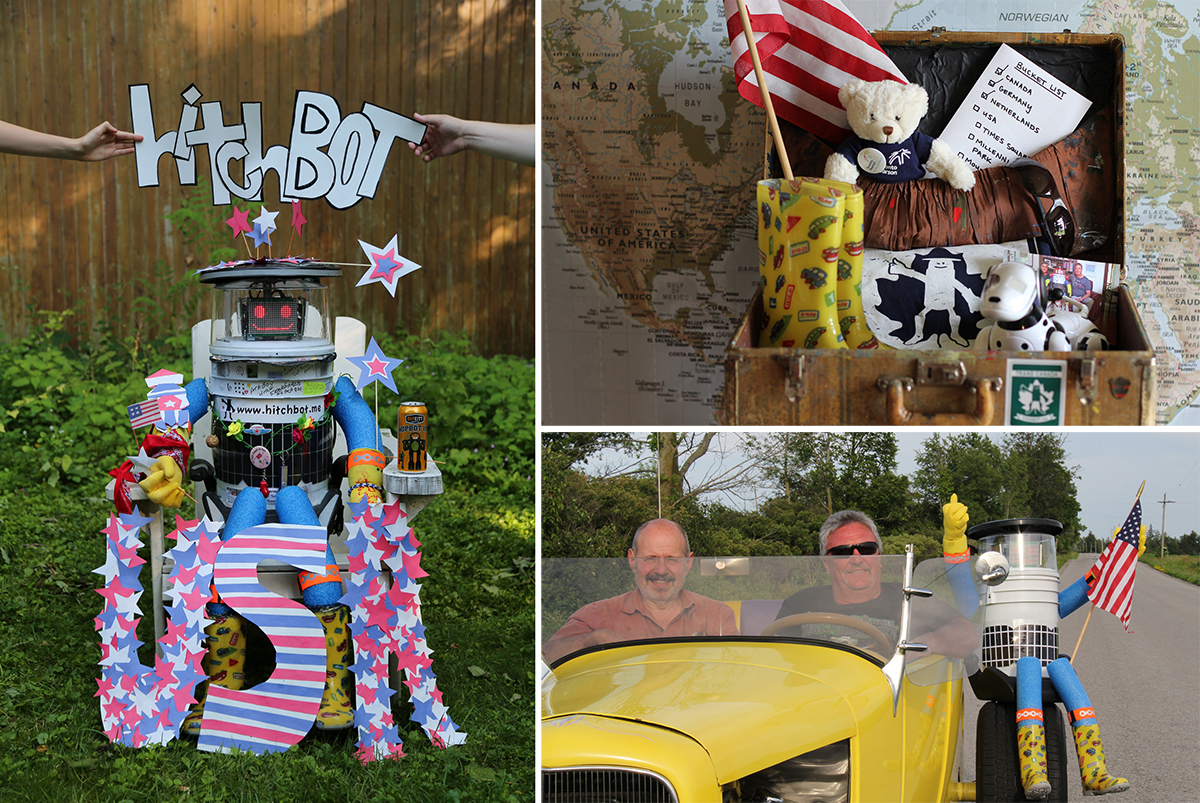HitchBOT the Hitchhiking Robot Is Making Its Way from Massachusetts to California

Photo provided
On July 17, hitchBOT, a robot built by two communications professors in Canada, will put up its thumb on the side of a highway in Massachusetts, asking a stranger for a ride and thus embarking on a journey across the U.S.
Standing three feet tall and sporting newly shined wellies, hitchBOT comes equipped with speech technology, a GPS system, and a bucket list. On its trip across the U.S., it hopes to see Times Square in New York, Millennium Park in Chicago, Mount Rushmore, and the Grand Canyon, depending solely on the goodwill of strangers to cross the items off the list and make it to its final destination, the Exploratorium in San Francisco.
“Trust is a very important part of this experiment,” says Dr. David Harris Smith of McMaster University in Hamilton, Canada, who co-designed hitchBOT with Dr. Frauke Zeller of Ryerson University in Toronto. “There’s this issue of trust in popular media where we see a lot of dystopian visions of a future with robots that have gone rogue or out of control. In this case, we’ve designed something that actually needs human empathy to accomplish its goals.”
In fact, Harris Smith and Zeller came into the project focused on the idea of whether or not robots can trust humans—not the other way around. Last year, hitchBOT successfully completed adventures across Canada and Germany, returning safely to its guardians Harris Smith and Zeller just in time for a “family vacation” in the Netherlands.
“I was quite concerned actually, but that’s part of the experiment,” said Zeller about the idea of hitchBOT getting lost on its travels and not making it home. “But then it started to really become very popular on social media, and you could see how many positive sentiments there were, and then I wasn’t that concerned anymore suddenly. Through social media, it basically has a safety belt of 31,000 followers.”

Photos provided
Although hitchBOT is programmed to periodically take photos, which are then selectively published on social media by Harris Smith and Zeller, and its location is tracked on a map, its interactions with people are not otherwise surveilled.
“We really were very strict about recognizing people’s privacy,” said Zeller. “We want to focus on trust, and we want to have this really genuinely developed robot.”
Zeller and Harris Smith have been making improvements to hitchBOT following each trip, and for its trek across the U.S., the robot comes equipped with a battery meter and upgraded speech recognition—it now emits a small beep to indicate when it’s listening.
“It can be quite chatty,” said Zeller. “Sometimes it’s a little annoying, and it doesn’t shut up, but you can tell it to be quiet.”
For other troubleshooting issues—What if he’s babbling nonsense? What if he runs out of power?—hitchBOT’s new friends can refer to the “Help” section on its website.
Before sending hitchBOT off on his journey on an undisclosed highway—it’s important that the first interaction is spontaneous, not orchestrated—Harris Smith and Zeller are giving it a proper goodbye party on July 16 at the Peabody Essex Museum in Salem. After that, they’ll wait patiently to see if and when hitchBOT will arrive in San Francisco.
“It could take anywhere between a week and a couple of months or a couple of years. Someone could take it to Hawaii,” said Zeller. “We have no idea.”
HitchBOT’s send-off takes place at the Peabody Essex Museum on Thursday, July 16, 6-9 p.m. Admission is $10 for nonmembers and free for members and Salem residents. To follow its travels, visit hitchbot.me.


